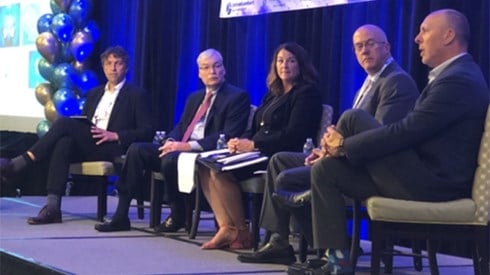Nimble Captive Insurers Are Here To Help

August 09, 2019

The Power of Sharing
News from Minnesota captive owners was on the list of topics covered at this year's "Hot Topics with Dave Provost" session at the Vermont Captive Insurance Association conference. Joshua Reding, senior director of risk management for Life Time, Inc., which has a Vermont-domiciled captive insurance company, announced that a round table group of approximately 35 captive owners in Minnesota was formed earlier this year. The group plans to meet on a quarterly basis to discuss hot topics as well as to network and work on benchmarking initiatives.
As a state with a large number of Fortune 100 and Fortune 500 companies, many Minnesota-based organizations have captive insurance companies. While members of the new group gain insights by attending captive domicile events, they decided it was important to exchange meaningful risk management information more frequently. As captive owners, their goal is to work together to make each of their individual companies better by sharing information. Mr. Reding said the exchange has thus far been incredibly powerful for all of the participants—new and mature captive owners alike.
In a Harsh Market
Also on the panel, Jim Swanke, senior director at Willis Towers Watson, said the availability of insurance became an issue for some risk managers and their organizations during this year's July renewal cycle. The commercial insurance markets have "cut back" in property and in liability, particularly professional liability.
"Fortunately, our nimble captives were there to help," said Mr. Swanke.
For instance, some organizations used their captive insurance companies to fill voids in insurance coverage "layers" where they were not able to get fully subscribed (see IRMI.com for a definition of "layering").
Some organizations also faced increased pricing. Loss development in certain industry sectors is significant, which is straining profitability for some insurers.
Mr. Swanke suggested that the hardening market may be "more than a blip," which means captive insurers will need to consider how to address issues surrounding availability and pricing.
Dave Provost, deputy commissioner of Vermont's Captive Insurance Division, said his department has seen evidence of a hardening market for some time. Captive insurers have submitted business plan changes to the department reflecting that they are retaining more of their own risk.
For example, where in the past they may have had 20 reinsurers participating in their reinsurance program, they now have 10. This is happening both on the reinsurance side and on the direct insurance side, according to Mr. Provost.
Commenting on the growing issues around reduced coverage and greater insurance policy exclusions in the hardening market, Mr. Swanke said, "One of the advantages of having a captive … is [that] you can have a manuscript policy form."
In prior periods of market hardening, such as that experienced right after 9/11, among other tactics, some captives switched to using very broad policy forms to take on as much risk into the captive as possible while seeking out reinsurance partners that were willing to follow the broad scope of coverage found in the captive's manuscript policy forms.
Sandy Bigglestone, director of captive insurance, Department of Financial Regulation for the state of Vermont, commented that in the soft market, captives—particularly group captives—became very service-oriented. She advised that this orientation would bode well in the hard market to curb potential issues that could arise, such as captives that are growing too quickly or growing excessively in response to the hardening market.
She also noted that new organizations forming captives in response to a hard market will quickly realize that "[captive insurance has] been a tool [they have] been missing out on for a long time."
While unsubstantiated, some believe that in the past, captives have actually "created" a soft market, when well-managed captives caused a response from the commercial insurance market.
Ms. Bigglestone added, "In the last decade … we went from 4,000 captives worldwide to about 7,000 captives worldwide." This occurred in a soft market over an entire decade. She believes with a hard market there will be "some tremendous [upcoming] growth" in captives.
Pictured above (left to right) is Nick Morgan, moderator from Captive Review; Jim Swanke, senior director at Willis Towers Watson; Sandy Bigglestone, director of Captive Insurance, Department of Financial Regulation for the state of Vermont; Dave Provost, deputy commissioner of Vermont’s Captive Insurance Division; and Joshua Reding, senior director of Risk Management for Life Time, Inc.
August 09, 2019

